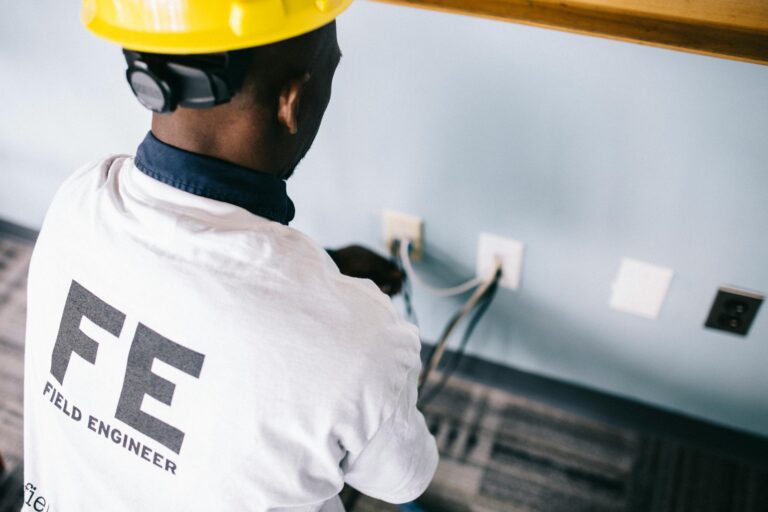Embarking on a home inspection can feel like a treasure hunt. But instead of seeking gold, you’re on the lookout for ‘home inspection red flags’ that could signal trouble ahead. Let’s uncover these warning signs so you can navigate your homebuying journey with confidence.
The Foundation: Cracks Are More Than Just Cosmetic
It all starts with a solid foundation, both in life and in homes. Horizontal cracks, water damage, or a shifting base can spell serious trouble. These red flags can be the harbingers of costly repairs down the road, so give them more than a cursory glance.
A home’s foundation is like its backbone, providing support and stability. When inspecting a property, pay close attention to any cracks in the foundation, especially if they’re horizontal or wider than a quarter-inch. These types of cracks can indicate structural issues that may require extensive repairs. Additionally, keep an eye out for signs of water damage, such as dampness or staining, as this could suggest poor drainage or foundation issues.
Roof Over Your Head: Signs of Aging and Neglect
Next up, the roof—your home’s shield against the elements. Missing shingles, sagging spots, or frequent leaks are like flashing neon signs saying, “Investigate further!” A compromised roof can lead to water damage, mold, and a whole host of issues.
The roof is one of the most critical components of a home, protecting it from rain, snow, and other environmental hazards. During a home inspection, be sure to thoroughly examine the condition of the roof. Look for missing or damaged shingles, as well as signs of sagging or unevenness. These can indicate underlying structural issues that may require immediate attention. Additionally, check for signs of water damage or leaks in the attic or ceiling, as these could signal a failing roof.
Plumbing: The Lifelines of a Home
Plumbing issues can quietly erode a home’s health from the inside out. Low water pressure, old pipes, or a water heater that’s on its last legs are more than inconveniences; they’re red flags that demand attention.
The plumbing system is like the lifeline of a home, delivering water to faucets, showers, and appliances. During a home inspection, it’s essential to assess the condition of the plumbing system to ensure it’s in good working order. Check for signs of leaks or water damage around sinks, toilets, and appliances. Additionally, inspect the water heater for signs of rust or corrosion, as this could indicate a potential failure in the near future. Finally, test water pressure in various faucets to ensure it’s adequate throughout the home.
Electrical System: The Spark That Could Fizzle
Old, outdated electrical systems aren’t just inefficient—they can be downright dangerous. Flickering lights, warm outlets, or an overabundance of extension cords are signs that the electrical system might need a major overhaul.
The electrical system is like the nervous system of a home, powering lights, appliances, and electronics. During a home inspection, it’s crucial to assess the condition of the electrical system to ensure it’s safe and up to code. Look for signs of outdated or damaged wiring, such as flickering lights, warm outlets, or frequently tripped circuit breakers. Additionally, check for the presence of GFCI outlets in kitchens, bathrooms, and outdoor areas, as these are essential for protecting against electrical shocks.
HVAC: The Heartbeat of Home Comfort
A home’s heating and cooling system is its comfort controller. If the HVAC is past its prime, or the house seems unevenly heated or cooled, consider these red flags that the system might need repair or replacement.
The HVAC (heating, ventilation, and air conditioning) system is like the heartbeat of a home, regulating temperature and airflow to keep occupants comfortable year-round. During a home inspection, it’s important to assess the condition of the HVAC system to ensure it’s functioning properly. Check for signs of wear and tear on the furnace, air conditioner, and ductwork, such as rust, corrosion, or unusual noises. Additionally, test the system to ensure it’s providing adequate heating and cooling throughout the home. If the HVAC system is outdated or in poor condition, it may be necessary to budget for repairs or replacement in the near future.
Attic and Insulation: Hidden Havens for Issues
The attic isn’t just for storing holiday decorations—it’s also a window into a home’s health. Inadequate insulation, ventilation issues, or signs of pests can turn this hidden space into a source of major problems.
The attic is like the lungs of a home, regulating airflow and temperature to maintain comfort and efficiency. During a home inspection, it’s essential to assess the condition of the attic and insulation to ensure it’s functioning properly. Check for signs of inadequate insulation, such as uneven temperatures or drafts, which can lead to increased energy costs and reduced comfort. Additionally, inspect the attic for signs of moisture or water damage, as this could indicate ventilation issues or a leaking roof. Finally, look for signs of pests, such as droppings or chewed insulation, which can cause damage and compromise indoor air quality.
Basement and Crawl Spaces: Subterranean Storytellers
Basement and crawl spaces can tell the story of a home’s history with water. Dampness, musty smells, or mold can signal that water has been a frequent, unwanted guest, potentially compromising the structure and air quality.
Basements and crawl spaces are like the hidden underground chambers of a home, providing access to plumbing, electrical, and HVAC systems. During a home inspection, it’s important to assess the condition of these spaces to ensure they’re dry, clean, and free of moisture issues. Check for signs of dampness, musty odors, or mold growth, which can indicate water intrusion or poor ventilation. Additionally, inspect the foundation walls and floor for cracks or signs of settlement, as these can compromise the structural integrity of the home.
Identifying home inspection red flags is a critical step in the homebuying process. By knowing what to look for, you can avoid the pitfalls that could turn your dream home into a nightmare. So keep your eyes wide open, and don’t let these warning signs slip by unnoticed.





